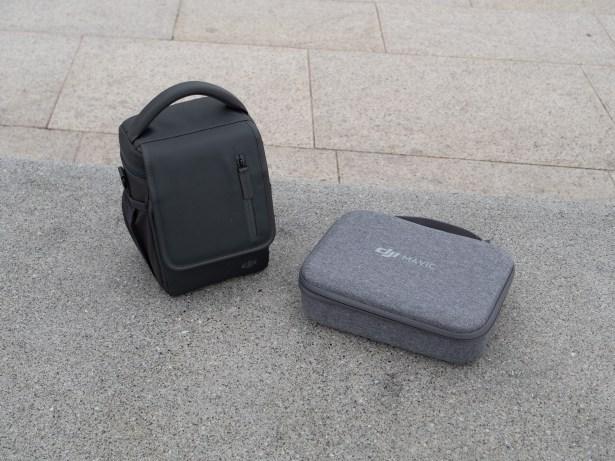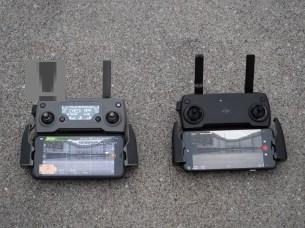We tested DJI's new consumer drone, the Mavic Mini. Is it really suitable for beginners and can it really be taken everywhere? This is what we have verified.
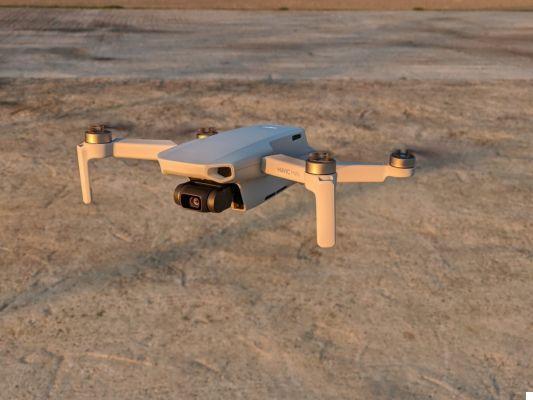
The DJI Mavic Mini
Pioneer and leader of the civilian drone, the Chinese DJI presented on October 30 the Mavic Mini, a “flying camera” for all audiences, intended in particular for beginners. Sold for 400 to 500 euros only, this miniature drone is more of a replacement for the Spark, launched a little over two years ago and recently withdrawn from the catalog, than a variant of the Mavic Air and Mavic 2 Pro.
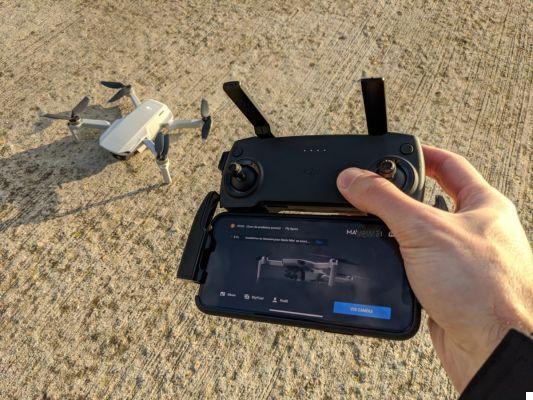
The DJI Mavic Mini ready to take off!
A miniature drone to take everywhere
From the Mavics, this new Mini takes up the foldable design, which makes it even more portable than the Spark. The new quadcopter packs the essentials in a device measuring only 140 x 82 x 57 mm when folded up. It is a little smaller than its remote control!
Above all, it weighs only 249 g, a mass less than the 250 grams from which the American and British authorities impose declaration and training, and well below the Spanish threshold of 800 grams. This featherweight imposes some concessions, on which we will come back, but it gives the device a record autonomy, 30 minutes claimed.
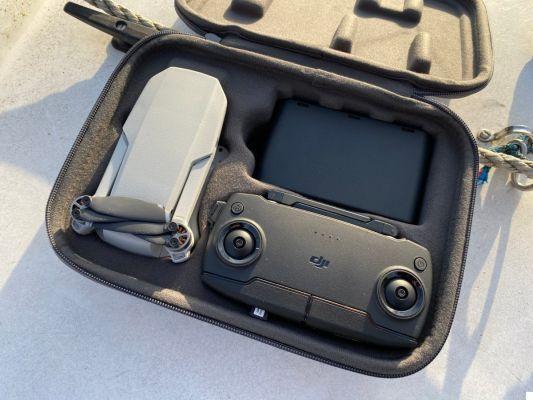
The DJI Mavic Mini case
Concretely, you can take the Mavic Mini and its remote control everywhere, in the small DJI case, in any bag, or even in the pockets of certain jackets or coats.
YouTube linkSubscribe to Idroid
An efficient Wi-Fi remote control
The radio control (RC), in fact, is a simplified version of that of the Spark and the Mavics, without a screen, and with a few less commands. On the other hand, we find removable sticks, antennas and foldable handles. These can accommodate a smartphone, which complements the remote control and serves above all as a video return. They house larger smartphones, such as the Samsung Galaxy Note 10+ or OnePlus 7T Pro, and fairly thick models, such as the iPhone 11 Pro with the Apple silicone case. Micro-USB, USB-C and Lightning connection cables are provided. The position of the smartphone, under the remote control, may seem odd, but it does not pose any problem in practice, and gives a good balance to the whole.
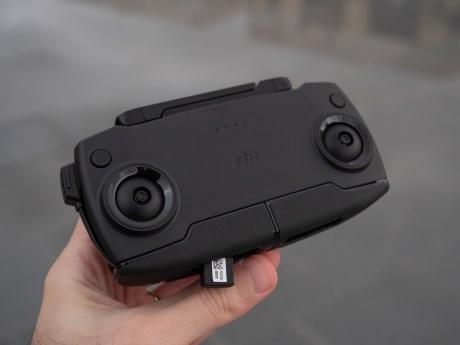
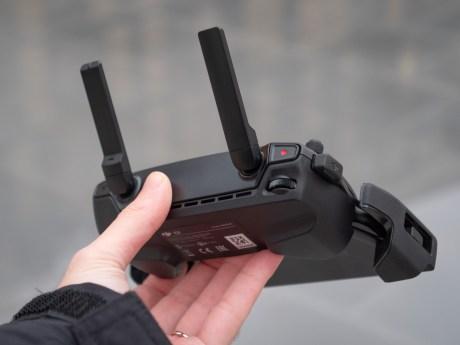
Like the Spark, the Mavic Mini communicates with the remote control via Wi-Fi on the 2,4 GHz band, and not via the proprietary OcuSync radio technology of the brand's other drones. However, you cannot remotely control the drone without a radio control, directly from your smartphone, as you can do with the Spark. But the RC's external antennas certainly contribute to the theoretical maximum range of 2 km.
YouTube linkSubscribe to Idroid
In practice, given its dimensions, you lose sight of the device from a hundred meters, but this is prohibited by Spanish law. Most of the authorized flight zones being quite far from built-up areas and therefore from electromagnetic disturbances, we have nevertheless pushed it for science to the four corners of an open plain, more than 500 meters away, without the slightest loss of signal. The application also clearly displays in which direction the drone is located, so that we can face it to optimize the signal, ingenious.
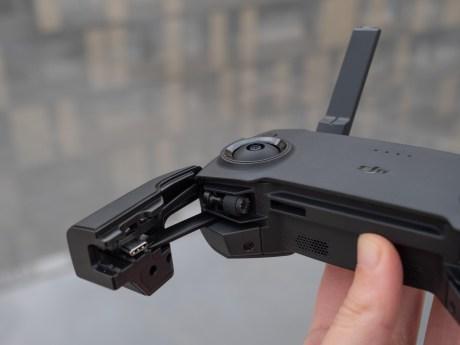
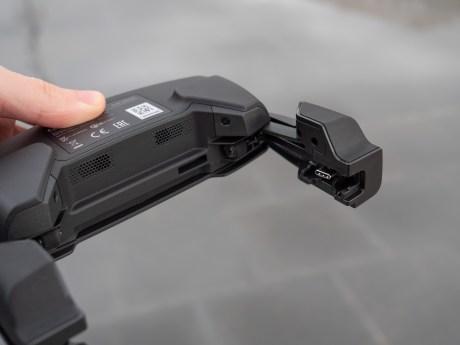
DJI Fly, a simplified application
The Mavic Mini comes with a new application, DJI Fly, a simplified version of the DJI GO 4 application for the brand's other drones. It accompanies beginners with tutorials, and has a less dense interface, although still a little confusing, compared for example to Parrot's FreeFlight applications.
However, the Mavic Mini is easy to pilot. A virtual button on the screen takes off the drone, which starts its four engines then climbs a little over a meter. This is an opportunity to observe the stability of the aircraft which, at least under good conditions, hovers with an accuracy of around 10 cm on the 3 axes. Indoors or at low altitude, the drone relies to do this on a pair of ventral sensors, which allow it to measure the distance from the ground and to stabilize on the horizontal plane. Outdoors, a GPS receiver allows it to determine its absolute position to stabilize on the three axes.
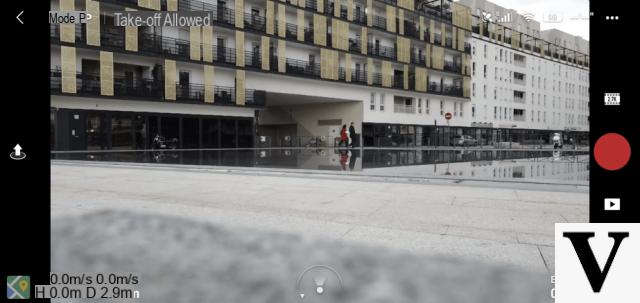
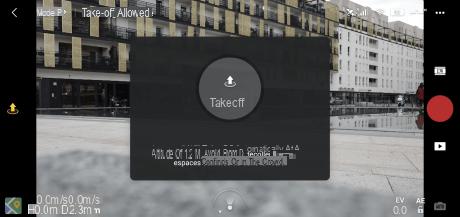

After takeoff, all you have to do is operate the left stick to pivot to the left or right and to climb or descend, the right stick to move forward or backward and to shift to the left or right. This is "Mode 2", but those used to model aircraft making can choose modes 1 and 3 in the application settings.
The Mavic Mini also offers three flight modes: a "Position" mode, by default, a "Sport" mode or on the contrary a new "CineSmooth" mode, which make the drone more or less fast, more or less responsive. CineSmooth mode smooths movement (except for tilting the gimbal), making it much easier to shoot videos. Depending on the mode chosen, the maximum speed is 14, 29 or 47 km / h in forward gear and 5, 7 or 14 km / h in uphill.
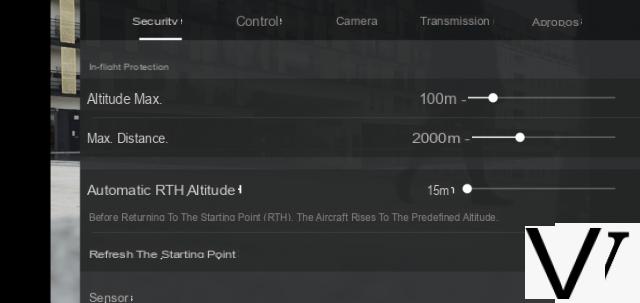
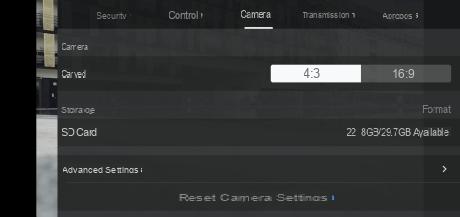

Easy to pilot, but watch out for obstacles!
In any case, the Mavic Mini has no obstacle sensor, which is paradoxical given its beginner target. The two grids above the camera are reminiscent of the front obstacle sensors of other Mavics, but here they are fictitious, purely cosmetic.
However, even if we do not send the device very far, even a few tens of meters, it is difficult to estimate visually the distances between this small device and obstacles such as the branch of a tree or a pole, if they are out of the fairly narrow field of view of its camera. If it comes into contact, there is a great risk that the drone will fall. It's lightweight and its plastic shell feels sturdy, so it would have a chance of not breaking, but it could fall in an inaccessible place, or worse on someone (which is why Spanish law prohibits flying over people. ).
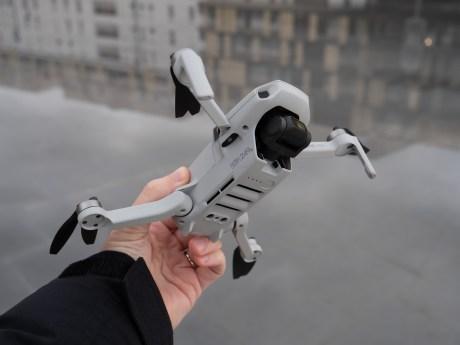
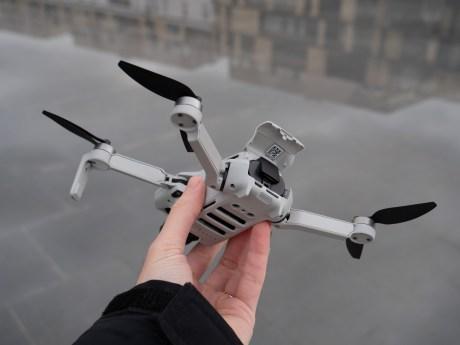
We therefore strongly recommend purchasing the 360 ° propeller guards, included in the Fly More bundle. They are fragile and bulky, they are quite painful to fix, and partially negate the portability of the whole, but they advantageously compensate for the absence of obstacle sensors and allow to fly more serenely. They add 50 grams or 20% to the weight of the drone, and correspondingly reduce its autonomy, which nevertheless remains sufficient to make beautiful images.
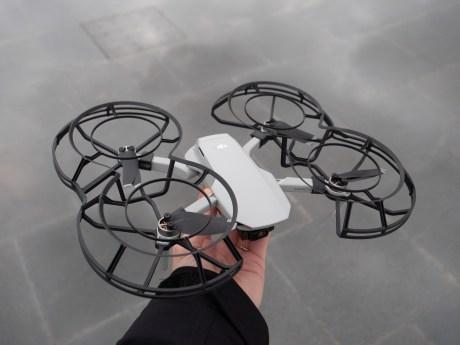
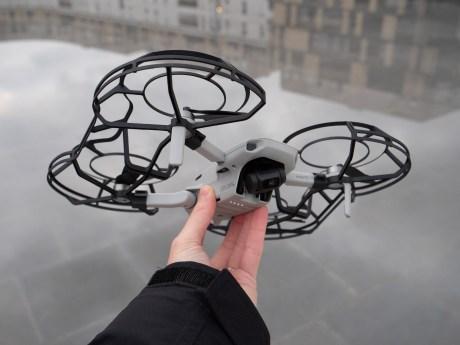
Before taking stock of autonomy, let us underline that the Mavic Mini loses a specificity of the Spark: the possibility of taking off and landing from one hand, and the gesture controls allowing to make a “dronia” without remote control or smartphone.
More than 20 minutes in flight
A direct consequence of its lightness, autonomy is one of the strengths of the Mavic Mini. DJI claims a maximum flight time of 30 minutes, measured in flight at 14 km / h without wind (a hover uses more energy). In practice, we were able to film the Vaches Noires cliffs, a natural site on the Normandy coast, for 22 minutes. It was windy including a few gusts which the drone compensated for, and we landed it a few seconds after the first low battery warning i.e. with a few minutes of safety.
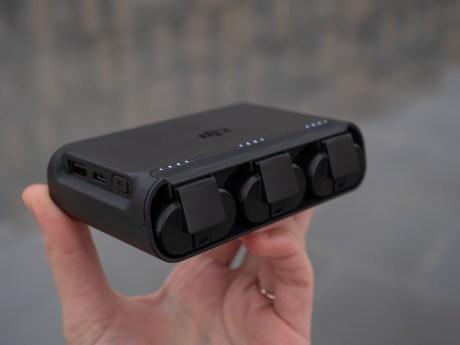
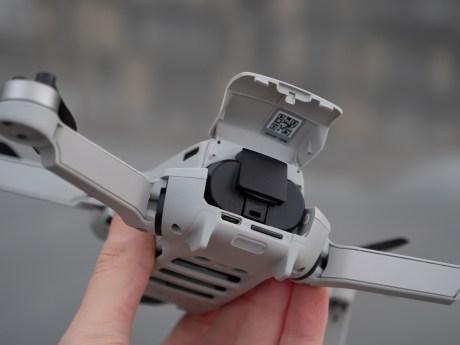
Note the presence of the RTH function, for return to home, that is to say return to the starting point, which can be activated manually and which engages automatically when the estimated autonomy falls under 5 minutes. During a RTH, the drone automatically returns to the point from where it took off, shooting straight, without taking into account any obstacles. It is therefore necessary to have configured the "automatic altitude" according to the height of potential obstacles.
You can cancel the procedure, for example if you have followed the drone and prefer to extend the flight for a few minutes (accompanied by a powerful beep) and manually place it nearby. Just push the stick down or press an on-screen button and it automatically lands smoothly.
Stabilizer gimbal and 2,7K video
DJI presents the Mavic Mini as a “flying camera” and it's time to talk about its photo and video performances. To begin with, the device embeds a "gondola" which stabilizes the camera on three axes: yaw, pitch and roll. Unlike racing drones, which are flown in first person view with FPV goggles, a “flycam” like the Mavic Mini flies flat, only tilting to move forward. The nacelle effectively compensates for even the most abrupt movements of the aircraft and constantly keeps the camera level. It can nevertheless be tilted from 0 to 90 ° downwards using the wheel located on the left shoulder of the remote control.
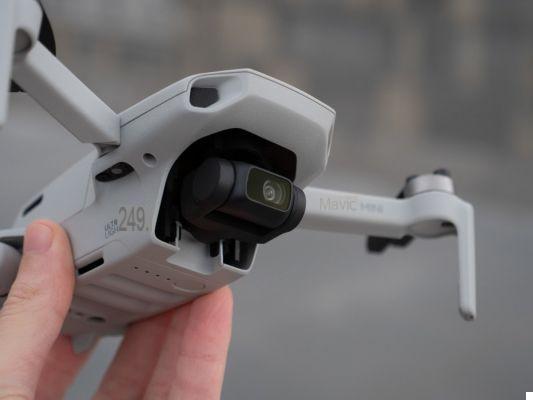
The DJI Mavic Mini gimbal
This gimbal has a 12-megapixel 1 / 2,3-inch CMOS sensor with an 83-degree lens equivalent to a 24 mm f / 2,8, capable of filming in 2,7K (2720 x 1530 pixels) at 25 or 30 i / s or in 1080p (1920 x 1080 pixels) at 25, 30, 50 or 60 fps, in H.264 at 40 Mb / s. A wider field of view would have seemed more consistent for this miniature drone. In particular, because it lends itself fairly well to indoor flights or in narrower spaces, where there is often a lack of recoil. Also, because we would have liked not to have to fly it as far as a Mavic 2, twice as large, to bring a point of interest into the frame (starting with a human on the same level during a "dronia"). And finally, because the 2,7K definition is not really of interest as such, its main interest being to crop losslessly, and therefore to “zoom in” if necessary, producing a 1080p video.
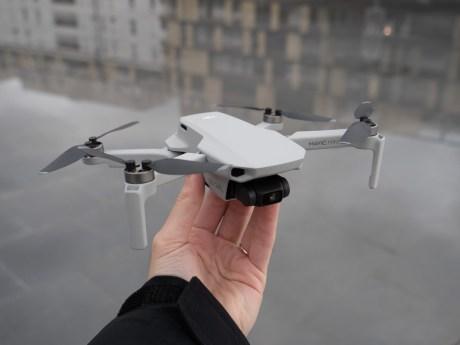
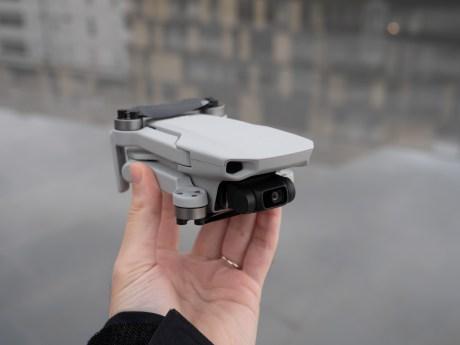
An average camera, stunning images
Regardless, the picture quality is that of a mid-range smartphone. The Mavic Mini's camera falls into a dead end with excessive sharpness. On the other hand, the automatic white balance is faithful and the colors appear natural. The main flaw is, as often, the reduced dynamic range: the camera is not able to correctly reproduce contrasting scenes, which a drone is unfortunately frequently confronted with. Heaven or earth, it will be necessary to choose.
In this regard, the Mavic Mini's DJI Fly application offers a manual photo exposure mode (sensitivity from ISO 100 to 3200, shutter from 4 s to 1/8000 s, fixed aperture of f / 2,8), but not on video. In video, we can only lock and compensate the exposure (plus or minus 3 EV).
But with a “flying camera” you get completely new points of view, and the Mavic Mini can easily produce stunning photos and videos, even when they're technically imperfect, that will spark the wonder of those around you.
YouTube linkSubscribe to Idroid
In addition to photo and video modes, the DJI Fly app offers four pre-programmed flight modes, called QuickShots, with which it performs preset movements while recording independent video files. The video file starts when you launch the QuickShot and stops as soon as the movement is finished, without the slightest margin neither before nor after, which is often frustrating.
To perform a QuickShot, we manually position the drone at the starting point, we select one of the modes, explicitly named dronia, rocket, circle and spiral, we point the subject to be framed, we choose the distance and the direction, and we Tap on Go. The drone starts recording the video, starts the movement, stops recording as soon as the movement is finished, and automatically returns to the starting point. In the absence of obstacle sensors, you must remain vigilant, and be ready to regain control at any time (all you need to do is activate the sticks on the remote control).

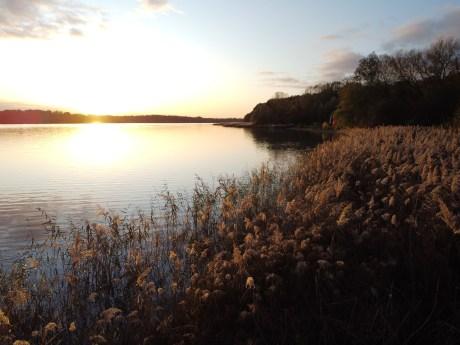
Photos and videos are saved in full quality on the microSD card on board the device. But at the same time, the application records the video feedback in real time, a highly compressed 720p stream, just good for Instagram. In addition to its remote control functions, DJI Fly indeed integrates an "Album" function, which allows you to consult these recordings, to retrieve the originals from the drone, to share one or the other directly, or to carry out simple edits, using models or basic tools.
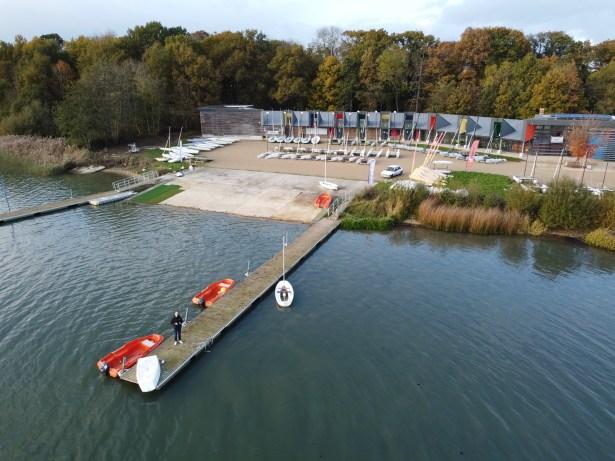
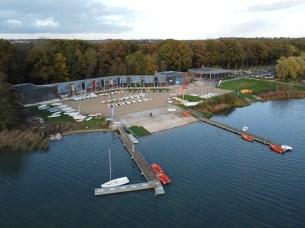

Finally, the application integrates a map function. This makes it possible to identify "Fly Spots", that is to say places suitable for flights, but DJI only refers to China. It also allows you to display the “DJI GEO Zones”, ie vigilance zones and restricted zones… defined by DJI. But these zones do not correspond to those defined in Spain by the DGAC (General Directorate of Civil Aviation), the only ones that we must trust to know if we are allowed to fly, and if so up to what altitude ( from 30 to 150 meters). Remember that other rules apply, in particular not to fly over people, and we invite you to learn the official notice.
The map functions of the DJI applications are therefore unfortunately unnecessary in Spain, where we can turn to the Drone Spot application, both for authorizations and for remarkable places.
Price and availability
The Mavic Mini is available from most authorized dealers. It is sold for 400 euros with the remote control and a battery, or 500 euros in a "Fly More" version including the remote control, three batteries, a charging station, a carrying case and the propeller guards that do not fit in the latter. .
Find the DJI Mavic Mini for less than 400 eurosFor comparison, the Mavic Air sells for 850 and 1050 euros respectively, the Mavic 2 Zoom from 1250 euros to 1750 euros and the Mavic 2 Pro from 1500 euros to 2000 euros.
